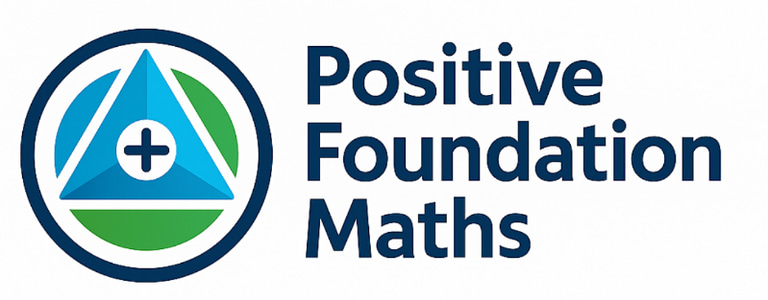Can categorising students reduce teacher cognitive load?
The pros and cons of student categories and how maths teachers can effectively teach KS4 maths to students with low prior attainment.
Jane Hardy
4/26/20254 min read


The use of student descriptors in school information dissemination
Is it helpful to categorise students who find themselves in maths sets with the lowest prior attainment? The purpose of the categories, particularly in IEPs, is to simplify and disseminate key descriptors of students to allow teaching staff to identify as quickly as possible teaching strategies and targeted support.
These documents, on the whole are edited once a year, typically after key events such as an EHCP review or at the start or end of an academic year. Whilst appearing to be dynamic reports, teachers often struggle to parse useful information for specific subject teaching, with students having many complex and changing requirements.
Very often, trial and error strategies used in the maths classroom may turn out to be very different, if not the complete opposite, of what is written in the IEP. This is not a criticism of the dedicated and vital student support staff that produce the reports; IEPs can only feedback information available at any one point in time. School resources to fully assess students, write and re-edit hundreds of reports even once an academic year can remain a big challenge. At other times in the academic year schools rely on ad-hoc email/database or ‘word of mouth’ updates, often once something has gone wrong for a student, and these may or may not reach the relevant teaching staff in time.
Categorising students
An exhausting number of terms, but not exhaustive, found in ‘individual’ learning (IEP) plans include: Attention Deficit Hyperactivity Disorder; Attachment Difficulties; Autistic Spectrum Conditions; Emotional Dysregulation; Global Development Delay; Hearing or Visual Impairments; Low Self-Esteem; Moderate Learning Difficulties (struggles with abstract concepts, memory and processing); Oppositional Behaviour; Physical Disabilities; School Refusal/ Avoidance; Specific Learning Difficulties (dyslexia, dyscalculia, dyspraxia); Speech, Language and Communications Needs.
Typically the lowest attaining maths set from Year 7 to Year 11 will have 12 to 20 students. Most students can be placed in several of the categories (and others; the list is not complete nor arguably a strong identifier of mathematical potential). Any one class will be made up of a complicated unique mixture of individual requirements, without factoring in teaching and learning preferences, the personalities of the staff and students, and other external factors that affect family life such as covid, economic downturns, (inter)national war conflicts, for example.
Categories generalise and inevitably information is lost, by the very nature of grouping apparently similar behavioural characteristics. Why may a student have these characteristics? Are the descriptors relevant and correct at the time of report reading? Are the descriptors comparable to past and present students, in the teachers’ experience, and ultimately parsable to effectively differentiate their maths teaching?
At best, categories give teachers and SLT a framework to manage student learning and wellbeing in the classroom, but teaching has to be nuanced to understand the limitations of the work done by staff who are not mathematics professionals. This places a particularly high cognitive load on teaching professionals before and during lessons, even with small class sizes.
Student and teacher communication
One way the teacher can make progress here is to monitor and encourage good communication between staff and the student to obtain real-time feedback and make adjustments to the teaching environment. Most 14+ year old students know what works for them in a classroom. Teachers can harness this information for maximum benefit to all adults and students in the room. This however relies on students feeling comfortable enough in the classroom to express their views, appropriately, to negotiate seating plans and additional cognitive offloading adjustments with the teacher. A teacher who is the most in-tune with a students changing cognitive requirements, without being a ‘walk-over’, makes teaching and learning more of a breeze.
Teacher differentiation of Foundation GCSE Maths schemes of work
Most secondary schools do not have a separate GCSE Foundation Maths scheme of work for ‘lower-attaining’ set(s). It is left to each individual teacher to simplify and differentiate their teaching and materials, which can substantially add to teacher workload and stress for a relatively small number of students. Lower attaining sets can be physically more demanding for teaching staff which ultimately affects the student experience.
Most state schools concentrate on grade 7 + targets (irrelevant to foundation students) and Grade 4/5 when allocating additional resources for teaching maths. Grade 4 targets can be anything from 45% upwards, but usually mostly below 90%, depending on the cohort's Year 6 bench-marking data. With school budgets under increasing pressure, it is logical to put the most effort into funding into the 90% or less who are closest to getting the relevant target grade, leaving 10% or more of students in classes with less support than they deserve.
The Positive Foundation Maths project has found that combining school resources including IEPS and generalised foundation schemes of work with our methods and resources for teaching maths substantially enables cognitive off-loading for all ‘lower-attaining’ students, regardless of their ‘categories’, and vitally improves GCSE maths results at Year 11 or 12 for ‘the 10%’. The project helps manage cognitive load for both teachers and students in sets with students who are in danger of not achieving a grade 4 or 5 by the end of Year 11.
Freely available advice and resources for KS4 Foundation maths
The Foundation Maths Project is building a free library of advice and resources for schools and teachers of KS4 prior low attaining students, to improve the teaching and learning experiences of the ’10%’, and the resources have been found to be useful in an expedited form for all Year 11 foundation students when revising after completing the teaching of the scheme of work, to fill gaps and make connections on basic material which allows students to gain Grade 5,
Resources at https://positivefoundationmaths.co.uk/ for improving cognitive off-loading for maths teachers and students, include:
Jane Hardy
26 April 2025
References
ACSL (13.6.2024) Class sizes set to rise in nearly three-quarter of schools because of funding crisis, https://www.ascl.org.uk/
Jones, K. (15.4.25) Evidenced Based Education, Cognitive Offloading: What is it and why is it important? https://evidencebased.education
Rosenshine, B. (2012). Principles of instruction: Research-based strategies that all teachers should know. American Educator, 36(1), 12–39.
Sherrington, T. (2019). Rosenshine's Principles in Action. John Catt Educational.
